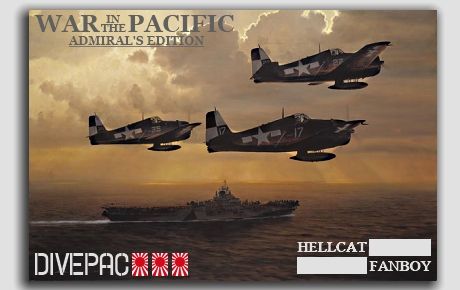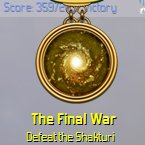Wade1000
Posts: 771
Joined: 10/27/2009
From: California, USA
Status: offline

|
The Ketarovs have been consolidated to the top of this thread.
quote:
Characteristics
Race Family: Ursidian
Default Reproduction Rate: 12%
Quite Intelligent (+15)
Extremely Passive (-40)
Very Cautious (+17)
Quite Unfriendly (-10)
Extremely Unreliable (-30)
Cunning Schemers: better spies +50%
I like how the artist made them appear has somewhat both dog-like and bear-like. I see in it also some seal, walrus, and racoon. :)
http://en.wikipedia.org/wiki/Ursidae
quote:
Bears are mammals of the family Ursidae. Bears are classified as caniforms, or doglike carnivorans, with the pinnipeds being their closest living relatives.
The Ursidae family belongs to the order Carnivora and is one of nine families in the suborder Caniformia, or "doglike" carnivorans. Bears' closest living relatives are the pinnipeds, a clade of three families: Odobenidae (the walrus), Otariidae (fur seals and sea lions), and Phocidae (true or earless seals). Bears comprise eight species in three subfamilies: Ailuropodinae (monotypic with the giant panda), Tremarctinae (monotypic with the Spectacled Bear), and Ursinae (containing six species divided into one to three genera, depending upon authority).
The origins of Ursidae can be traced back to the very small and graceful Parictis that had a skull only 7 cm (3 in) long. Parictis first occur in North America in the Late Eocene (ca. 38 million years ago), but this genus did not appear in Eurasia and Africa until the Miocene.[2] The raccoon-sized, dog-like Cephalogale, however, is widely regarded as the most primitive ursid and is ideally suited as a representative basal taxon for the family. Cephalogale first appeared during the middle Oligocene and early Miocene (approximately 20–30 million years ago) in Europe. Cephalogale gave rise to a lineage of early bears of the genus Ursavus. This genus radiated in Asia and ultimately gave rise to the first true bears (genus Ursus) in Europe, 5 million years ago. Even among its primitive species, such as C. minor, it exhibits typical ursid synapomorphic dentition such as posteriorly oriented M2 postprotocrista molars, elongated m2 molars, and a reduction of the premolars. Living members of the ursids are morphologically well defined by their hypocarnivorous (non-strictly meat-eating) dentitions, but fossil ursids include hypercarnivorous (strictly meat-eating) taxa, although they never achieved the extreme hypercarnivory seen in mustelids. Cephalogale was a mesocarnivore (intermediate meat-eater).[3] Other extinct bear genera include Arctodus, Agriarctos, Plionarctos and Indarctos.
< Message edited by Wade1000 -- 3/20/2010 4:04:36 PM >
_____________________________
Wish list:population centers beyond planetary(http://en.wikipedia.org/wiki/The_Culture):Ships,Ring Orbitals,Sphere Orbitals,Ringworlds,Sphereworlds;ability to create & destroy planets,population centers,stars;AI competently using all advances & features.
|
 Printable Version
Printable Version




























 New Messages
New Messages No New Messages
No New Messages Hot Topic w/ New Messages
Hot Topic w/ New Messages Hot Topic w/o New Messages
Hot Topic w/o New Messages Locked w/ New Messages
Locked w/ New Messages Locked w/o New Messages
Locked w/o New Messages Post New Thread
Post New Thread